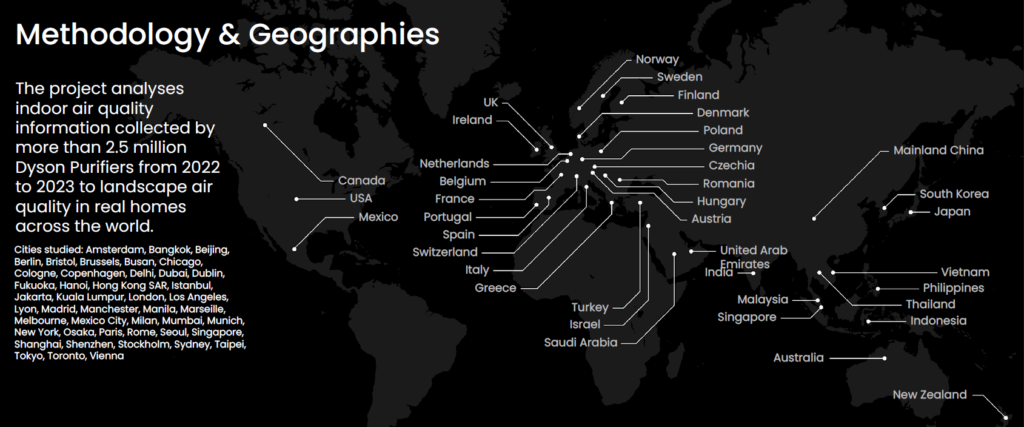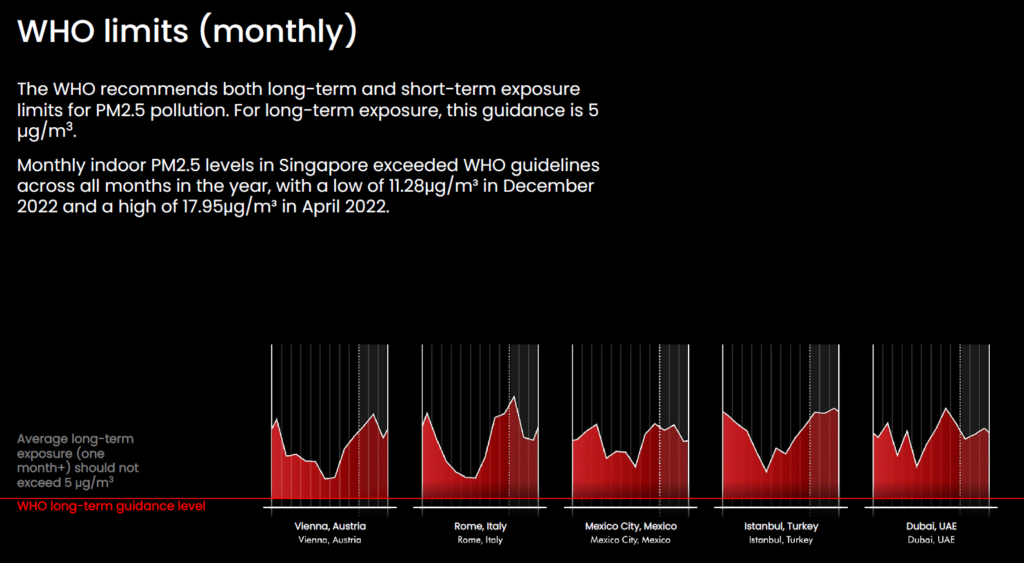
The Gen XY Lifestyle
Dyson’s project shows Singapore indoor PM2.5 levels higher than outdoor PM2.5 levels
Dyson’s first Global Air Quality Connected Data project analysed indoor air quality information collected by more than 2.5 million Dyson Purifiers from 2022 to 2023 to landscape air quality in real homes across the world. This is the largest study of its kind.

The data comes from Dyson Purifiers connected to the MyDyson™ app; the volume of data exceeds half a trillion data points and paints a precise picture of indoor air quality in cities and countries globally to help build
understanding and awareness of indoor air pollution.
Our connected air quality data allows us insight into the real problem of indoor air pollution in homes across the world. This gives us a direct understanding of the challenges Dyson Purifiers face in real environments and the knowledge to engineer ever-better machines to tackle those challenges. But the data we capture isn’t just an engineering tool – on an individual basis, this data is shared back through the MyDyson app in real-time and via monthly reports, to help our Owners improve their air quality understanding.
Matt Jennings, Engineering Director for Environmental Care
When looking globally at the indoor air quality data from Dyson, we find
India, China and Turkey occupying the top three spots.
However, there are four countries from Southeast Asia, including Singapore, that occupied the list of top 15 countries globally with the worst indoor annual average PM2.5 levels.

With PM2.5 annual indoor average levels at 14.21μg/m³, Singapore exceeds the recommended annual exposure level of 5μg/m³ by 180%. The data also found that monthly indoor PM2.5 levels in Singapore exceeded WHO guidelines across all months in the year, with a low of 11.28μg/m³ in December 2022 and a high of 17.95μg/m³ in April 2022.
Meanwhile, PM2.5 average annual outdoor levels were also found to be at 10.46μg/m³ – over 109% higher than the WHO recommended level of 5μg/m³.

When looking at PM2.5 annual average indoor levels versus PM2.5 annual average outdoor quality levels, 19 countries globally were found to have indoor air quality poorer than outdoor air quality on average, with Singapore taking the fourth spot after China, Austria and Spain.
Except for April, July, October and September 2022, monthly average indoor PM2.5 levels in Singapore were poorer than outdoor levels – bringing indoor air quality in Singapore to be 1.36 times worse on average than outdoor air quality
Indoor air pollution can be a cause of health problems when left unchecked. Dyson’s study showcases the prevalence of poor indoor air quality in Southeast Asia and dispels the common myth that outdoor air quality is always worse. This can support public understanding of indoor air pollution and is a prompt for clinicians to adopt a holistic view when managing allergic rhinitis, asthma, and bronchitis among other health
Dr Ong Kian Chung, Respiratory Physician and President of the Chronic Obstructive Pulmonary Disease (COPD) Association of Singapore.
issues.
According to the WHO, long-term exposure to PM2.5 is a likely cause for respiratory effects, cardiovascular and respiratory mortality and conditions such as lung cancer.
PM2.5 refers to particles as small as 2.5 microns in diameter, 1/25th the diameter of a typical human hair. These particles are invisible to the naked eye, can be inhaled and are an area of increasing scientific and health research. Sources include combustion, – wood burners, or gas cooking and heating – pet dander, ash and dust. VOCs are gas pollutants including Benzene and Formaldehyde which can be emitted from activities like cleaning, gas cooking as well as from products including deodorants and body sprays, candles, furniture and furnishings.
Data, and graphics are attributed to Dyson.
Photo by Photoholgic on Unsplash








